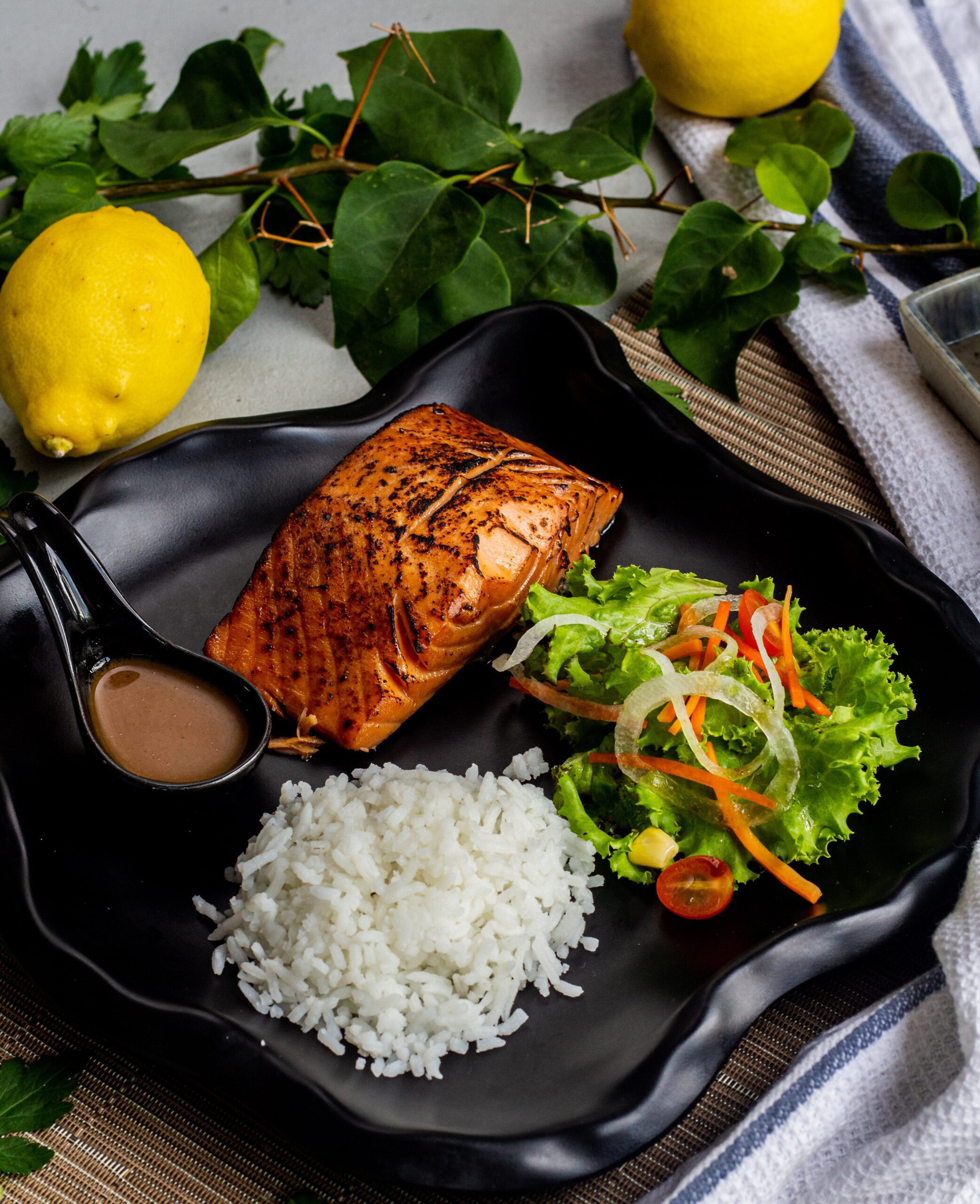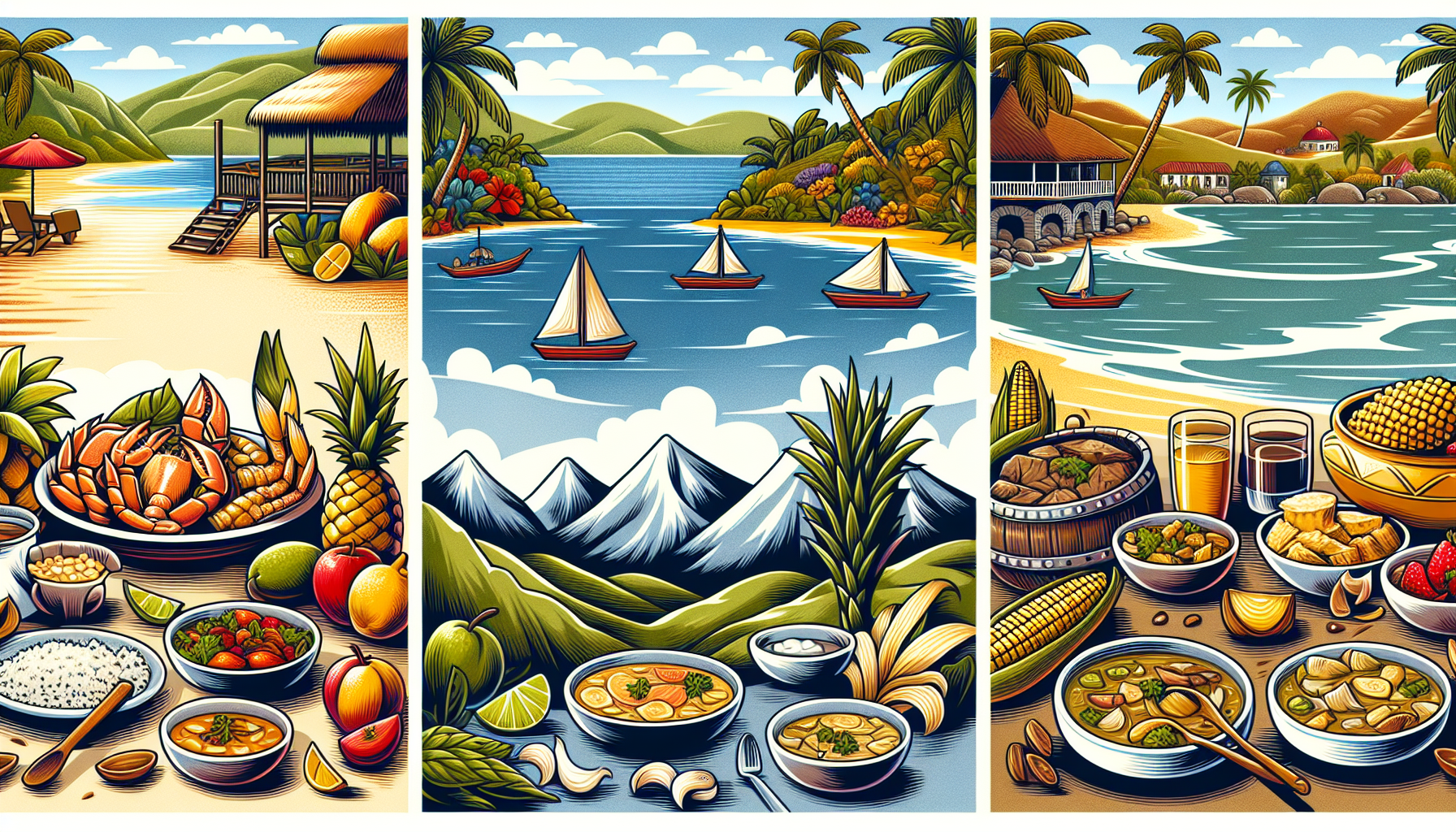Nicaraguan cuisine is a vibrant tapestry of flavors and ingredients that showcases the diversity of its culture and geography. From the bustling streets of Managua to the tranquil shores of Lake Nicaragua, there is an array of mouthwatering dishes waiting to be discovered. But what makes this cuisine truly intriguing is the way it changes with the seasons. Each time of the year brings its own unique flavors and local specialties that are deeply rooted in Nicaraguan traditions. Whether you are craving the fresh catch of the day or the comforting warmth of hearty soups, Nicaraguan cuisine will never cease to surprise and delight your taste buds.
Overview of Nicaraguan Cuisine
Nicaraguan cuisine is a vibrant and flavorful fusion of Indigenous and Spanish culinary traditions. With a strong emphasis on fresh ingredients and a variety of cooking techniques, Nicaraguan dishes reflect the country’s diverse cultural heritage and natural resources. From hearty stews to mouthwatering seafood delicacies, Nicaraguan cuisine offers something to satisfy every palate.
Traditional Nicaraguan Dishes
Traditional Nicaraguan dishes form the backbone of the country’s culinary tradition. These time-honored recipes have been passed down through generations, preserving the unique flavors and techniques that make Nicaraguan cuisine so special. From staple dishes like gallo pinto (a combination of rice and beans) to indulgent sweets like rosquillas (traditional corn flour cookies), these dishes provide a taste of the rich history and cultural heritage of Nicaragua.
Influence of Indigenous and Spanish Cuisine
Nicaraguan cuisine is a beautiful blend of Indigenous and Spanish culinary influences. The Indigenous people of Nicaragua, such as the Miskitos, Rama, and Mayangnas, brought their traditional farming and cooking techniques to the table. On the other hand, the Spanish conquistadors introduced ingredients like wheat, rice, and various meats to the region. This unique combination of Indigenous and Spanish flavors is what sets Nicaraguan cuisine apart.
Key Ingredients in Nicaraguan Cuisine
Nicaraguan cuisine utilizes a wide range of fresh and local ingredients, taking advantage of the country’s fertile land and abundant water resources. Some key ingredients frequently used in Nicaraguan dishes include corn, beans, rice, plantains, yucca, tomatoes, onions, garlic, cilantro, and peppers. Each ingredient adds its own distinct flavor and texture, contributing to the rich tapestry of Nicaraguan cuisine.
Seasonal Variations in Nicaraguan Cuisine
Understanding the Concept of Seasonal Cuisine
Seasonal variations play a significant role in Nicaraguan cuisine, just like in many other culinary traditions. The concept of seasonal cuisine revolves around using ingredients that are readily available during specific times of the year. By incorporating fresh, seasonal ingredients, Nicaraguan cuisine celebrates the bounties of nature and ensures the highest quality and flavors in its dishes.
Availability of Fresh Ingredients
Nicaragua’s tropical climate and fertile farmlands make it conducive to growing a wide variety of fruits, vegetables, and other agricultural products. During each season, different ingredients thrive, and locals take advantage of this abundance to create unique and delicious dishes. From juicy tropical fruits like mangoes and papayas to leafy greens and root vegetables, the availability of fresh ingredients varies throughout the year.
Impact of Climate on Food Choices
Nicaragua’s climate, characterized by distinct dry and rainy seasons, greatly influences the food choices and cooking techniques of the locals. During the dry season, when rainfall is scarce and the heat is intense, Nicaraguans tend to opt for heartier, more filling dishes that provide sustenance and energy. On the other hand, the rainy season brings a cooler climate and an abundance of fresh produce, inspiring lighter and more vibrant meals.

Local Specialties in Nicaraguan Cuisine
Introduction to Local Specialties
Nicaragua boasts an array of local specialties that showcase the diversity and uniqueness of its regional cuisines. Each region adds its own twist to traditional dishes, resulting in a culinary landscape filled with exciting flavors. From the Caribbean coast to the Pacific shores, Nicaraguan cuisine is a blend of indigenous traditions and their respective local ingredients.
Variety of Regional Cuisines
Nicaragua’s regional cuisines offer an incredible variety of flavors and cooking styles. The Atlantic or Caribbean coast is known for its flavorful seafood dishes, influenced by Afro-Caribbean and Indigenous cultures. The Pacific region, on the other hand, relies heavily on corn-based dishes, reflecting the Indigenous and Spanish influences. The central highlands showcase a fusion of both coastal and mountainous culinary traditions, resulting in a unique blend of flavors.
Traditional Dishes With Seasonal Variations
Traditional Nicaraguan dishes often undergo seasonal variations to take advantage of the freshest ingredients available. For example, the popular dish nacatamales, typically enjoyed year-round, may incorporate seasonal vegetables and fruits. The flavors and textures of these dishes evolve throughout the year, allowing Nicaraguans to savor the best of each season.
Dry Season Delicacies
Nacatamales
Nacatamales are a staple in Nicaraguan cuisine and are particularly popular during the dry season. These delicious treats are similar to tamales, but larger in size and packed with flavor. Nacatamales consist of seasoned masa (corn dough) filled with a blend of meats, such as pork, chicken, or beef, as well as vegetables, spices, and olives. They are then wrapped in banana leaves and steamed to perfection.
Gallo Pinto
Gallo Pinto, which translates to “spotted rooster,” is a classic Nicaraguan dish that can be enjoyed year-round but is a particularly popular choice during the dry season. This simple yet satisfying combination of rice and beans is cooked together with onions, garlic, and bell peppers, creating a colorful and flavorful medley. Gallo Pinto is often served as a breakfast dish alongside eggs, tortillas, and queso fresco.
Carne Asada
Carne Asada, or grilled meat, is a beloved Nicaraguan dish that is commonly enjoyed during the dry season. Typically made with marinated beef, the meat is seasoned with a blend of spices and grilled to perfection. Carne Asada is often served with gallo pinto, plantains, and chimichurri sauce, a zesty condiment made from parsley, garlic, and vinegar. The combination of smoky grilled flavors and fresh ingredients makes this dish a true delight.

Rainy Season Delights
Vigorón
Vigorón is a delightful dish that takes center stage during the rainy season. Hailing from the city of Granada, this flavorful dish consists of boiled yucca served with cabbage slaw and chicharrones (fried pork rinds). The combination of tender yucca, tangy slaw, and crispy pork creates a textural and taste sensation that perfectly captures the essence of Nicaraguan cuisine.
Sopa de Mondongo
During the rainy season, Nicaraguans often turn to heartwarming soups to combat the cooler temperatures. Sopa de Mondongo, a traditional Nicaraguan soup, is a hearty and comforting dish made with tripe (cow’s stomach), vegetables, and spices. The slow-cooked broth infuses the ingredients with rich flavors, creating a deeply satisfying bowl of soup.
Sweeter Variations of Local Dishes
The rainy season also brings an abundance of sweet treats and desserts to the Nicaraguan table. Dishes such as arroz con leche (rice pudding), tres leches (a sponge cake soaked in three types of milk), and cajeta de coco (coconut caramel) become popular choices during this time. These indulgent desserts offer a sweet ending to a satisfying Nicaraguan meal.
Festive Season Specials
Indio Viejo
Indio Viejo, meaning “Old Indian,” is a festive dish typically enjoyed during celebrations and special occasions. This flavorful Nicaraguan dish combines achiote-marinated meat (such as chicken or beef), cornmeal, tomatoes, onions, and bell peppers. The mixture is cooked slowly, producing a rich and aromatic stew. Indio Viejo is often served with rice, tortillas, and a side of fresh vegetables, making it a complete and satisfying meal.
Buñuelos
Buñuelos are a beloved holiday treat in Nicaragua, commonly enjoyed during Christmas and New Year’s. These fried dough balls are made from a mixture of flour, cheese, eggs, and cinnamon. The dough is then formed into small balls and deep-fried until golden and crispy. Buñuelos are often served dusted with powdered sugar or drizzled with a sweet syrup, making them an irresistible and festive dessert.
Chicha de Maíz
Chicha de Maíz is a traditional Nicaraguan beverage enjoyed during special occasions and celebrations. Made from fermented corn, this sweet and slightly tangy drink has a rich cultural significance in Nicaragua. It undergoes a fermentation process, resulting in a naturally carbonated beverage with a unique flavor profile. Chicha de Maíz is often served chilled and can be enjoyed by people of all ages during festive gatherings.

The Impact of Harvest Seasons
Coffee Harvest Season
The coffee harvest season in Nicaragua is a highly anticipated time of the year. Known for its exceptional coffee beans, Nicaragua boasts a thriving coffee industry. During the harvest season, locals engage in the labor-intensive process of hand-picking coffee cherries, ensuring only the ripest ones are selected. The freshly harvested coffee beans are then processed to preserve their distinct flavors, resulting in a rich and aromatic cup of coffee enjoyed by people around the world.
Livestock Farming and Meat Availability
Nicaragua’s livestock farming industry plays a crucial role in the availability of meat throughout the year. The dry season, with its abundance of grazing pastures, allows for the robust growth and development of livestock. As a result, Nicaraguans can enjoy high-quality meat, such as beef, pork, and chicken, throughout the year. Livestock farmers focus on ensuring the animals receive proper nutrition and care, resulting in flavorful and tender meat.
Fruit and Vegetable Harvests
Nicaragua’s fertile land and favorable climate make it an ideal environment for growing a wide variety of fruits and vegetables. Throughout the year, different fruits and vegetables reach their peak harvest seasons, providing Nicaraguans with an array of fresh and flavorful produce. From mangoes and pineapples to tomatoes and avocados, the availability of seasonal fruits and vegetables adds depth and vibrancy to Nicaraguan cuisine.
Changing Seafood Selections with the Seasons
Freshwater Delicacies
Nicaragua is home to several large freshwater lakes, providing a rich source of fish and other aquatic delicacies. The changing seasons significantly impact the availability of these freshwater delights. During the dry season, when water levels may decrease, certain types of fish, such as tilapia and guapote (rainbow bass), become more abundant. These fish are often grilled or stewed to highlight their delicate flavors.
Pacific and Atlantic Ocean Varieties
With both the Pacific Ocean and the Caribbean Sea bordering Nicaragua, locals have access to an extensive variety of seafood year-round. Seasonal variations in the availability of seafood ensure that Nicaraguans can enjoy different varieties depending on the time of year. From shrimp and lobster to snapper and mahi-mahi, the flavors of the ocean find their way onto the Nicaraguan table, adding a touch of coastal indulgence to the cuisine.
Seasonal Fishing Patterns
The fishing patterns in Nicaragua closely align with the changing seasons. During the dry season, when the ocean is calmer, fishermen venture farther out in search of larger and more prized catches. Conversely, during the rainy season, certain species of fish, such as sardines and snook, become more abundant closer to the shore. By adapting their fishing techniques to the seasonal patterns, fishermen ensure a steady supply of fresh seafood for Nicaraguan cuisine.

The Role of Cultural Festivities
Carnival Celebrations
Carnival celebrations play a significant role in Nicaraguan culture and cuisine. Held in various cities around the country, these vibrant festivals showcase traditional dances, music, and, of course, food. During carnival season, street vendors line the streets, offering an array of delicious snacks and treats. From crispy tortillas filled with cheese to fried plantains and chorizo, carnival food in Nicaragua is a celebration of flavors, aromas, and community.
Easter Traditions
Easter holds deep religious significance in Nicaragua, and it is a time when traditional dishes take center stage. Fanesca, a hearty soup made with a variety of grains, beans, and dried salted fish, is a signature Easter dish. Traditionally, it is prepared by families coming together to cook and share this elaborate and flavorful soup. The combination of ingredients represents the diversity of Nicaragua’s regions and communities.
Christmas and New Year’s Specialties
Christmas and New Year’s are joyous occasions in Nicaragua, and they are also a time to indulge in traditional specialties. Nacatamales, buñuelos, and Chicha de Maíz are among the must-have dishes during these festive times. Families come together to prepare these delicacies, fostering a sense of unity and tradition. Sharing these delicious treats with loved ones is a cherished part of the Nicaraguan holiday experience.
Incorporating Seasonal Ingredients in Modern Cuisine
Nicaraguan Fusion Cuisine
In recent years, Nicaraguan cuisine has seen a rise in fusion dishes that incorporate international influences and modern cooking techniques. Chefs are exploring innovative ways to combine traditional Nicaraguan flavors with ingredients and techniques from other culinary traditions. This fusion cuisine allows for creative experimentation and adds a contemporary twist to traditional dishes, showcasing the versatility and adaptability of Nicaraguan cuisine.
Innovative Chefs and Seasonal Menus
Nicaragua’s food scene is continually evolving, thanks to a new generation of innovative chefs who are passionate about showcasing the country’s culinary traditions. These chefs often create seasonal menus that highlight the best ingredients available during specific times of the year. From farm-to-table concepts to inventive tasting menus, these chefs are at the forefront of promoting Nicaraguan cuisine as a vibrant and dynamic culinary experience.
Creative Use of Local Ingredients
A notable trend in modern Nicaraguan cuisine is the creative use of local ingredients in unexpected ways. Chefs are exploring the vast range of fruits, vegetables, and traditional ingredients that the country has to offer, incorporating them into unique and surprising dishes. From adding tropical fruit salsas to traditional dishes to experimenting with new ingredient combinations, the creative use of local ingredients elevates Nicaraguan cuisine to new heights.
In conclusion, Nicaraguan cuisine is a diverse and flavorful fusion of Indigenous and Spanish influences. The seasonal variations in ingredients and regional specialties add depth and vibrancy to the culinary landscape. From the dry season delights to the rainy season delicacies and festive season specials, each dish captures the essence of Nicaragua’s rich cultural heritage. With innovative chefs leading the way, Nicaraguan cuisine continues to evolve, incorporating seasonal ingredients and surprising twists that keep food enthusiasts coming back for more. So, the next time you have the opportunity to try Nicaraguan cuisine, be prepared for a culinary adventure that celebrates tradition, culture, and the bounties of nature.

